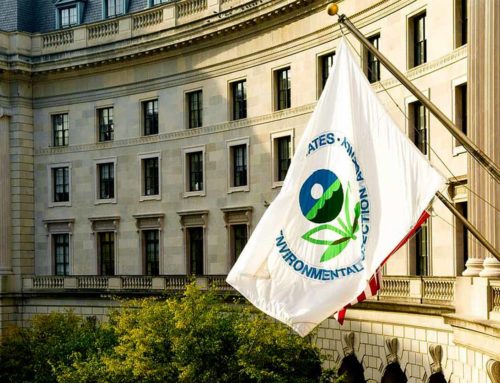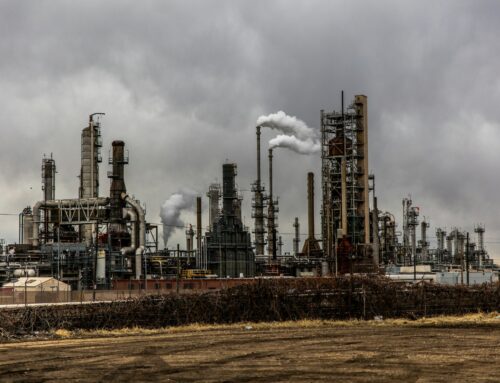FAQ
FAQ about the Effect of War in Ukraine on U.S. Oil and Gas
Oil and gas companies are exploiting the war in Ukraine to push for more subsidies
FAQ About the Effect of War in Ukraine on U.S. Oil and Gas
The war in Ukraine has prompted the oil and gas industry to push for more support from the American taxpayer. They want less rigorous oversight, faster permitting, more access to federal lands.
That’s why it’s important lay out the facts. Here are some FAQs about gas prices, U.S. oil and gas production, and the effect of the war in Ukraine.
NO.
The U.S. does not import a single cubic foot of natural gas from Russia, and imports of Russian crude oil and petroleum products make up a small fraction of what we import or use.
Looking at crude oil alone, the portion of all U.S. imports that comes from Russia varies from year to year. In 2021, 3.26% of U.S. crude imports came from Russia, but in 2014, it was only a quarter of 1%. Over the last decade (2012-2021), Russian crude oil made up just 1.05% of all U.S. crude imports.
A broader measure includes petroleum products – like diesel, heating oil, jet fuel, gasoline, and others. In 2021, roughly 8% of all U.S. imports of crude and petroleum products came from Russia, but over the last decade, just 4.8% did.
The price of crude oil is the dominate factor in the price at the pump. And crude oil spot prices are settled in the international market. Although the U.S. does not import much Russian oil, Russia is the third biggest oil producer in the world and accounts for around 11% of world oil supply. (The United States and Saudi Arabia are the first and second biggest oil producers, making up 20% and 12% of world oil supply, respectively).
Crude oil spot prices go up as buyers become hesitant to purchase Russian oil due to risks and uncertainties, or are unable to because of import limitations. For example, the United States, the U.K. and other countries have announced bans or limits on the amount of Russian oil that can be imported. This increases the demand for non-Russian oil at a time when inventories are low.
Federal leasing policy has little to no impact on production.
Oil production on federal lands only accounted for about 6% of total U.S. oil production over the last decade, while gas production on federal lands made up about 10% of the U.S. total. Moreover, the vast majority of federal production comes from leases issued decades ago that are insulated from most changes in federal policy. So any change in policy for new leases, like much-needed reforms to the system, would affect only a fraction of a fraction of U.S. oil and gas production. Even then, most studies indicate production effects would be minimal or negligible.
The amount of influence federal leasing policy can have on U.S. production has been blown out of proportion. The rest of U.S. oil and gas production comes from state and private lands as well as offshore development, almost all of which have been charging higher royalties than federal leases.
Business is booming.
The oil and gas industry has been benefiting from rising oil and gas prices over the past year. In 2021, the six largest publicly traded oil and gas companies, Exxon Mobil, Chevron, Shell, TotalEnergies, ConocoPhillips and BP, raked in $90.4 billion. With record cash flow on hand, these six companies have all announced new stock buyback or dividend programs to funnel returns to shareholders.
Despite the influx of resources, oil and gas companies have not been expanding their output much. The number of rigs drilling new oil and gas wells is up 13% from the start of 2022. But the rise has been led by new gas wells and U.S. weekly average oil production has remained essentially flat since November 2021. Quotes from some oil executives indicate the lack of new production is an intentional strategy to keep oil prices from dropping.
Yes. At the end of FY2021, oil and gas companies were sitting on 9623 approved Application for Permit to Drill (APDs) that allow them to start drilling whenever then want. These approved APDs have often been conflated with leases recently as oil and gas companies try to exploit the war in Ukraine to make leasing rules more lax for themselves.
Oil and gas companies can start drilling whenever for two years after their APD gets approved, or when their lease expire, whichever occurs first. Approved APDs can be granted two-year extensions by the Bureau of Land Management (BLM).
Because taxpayers deserve to receive a fair return for the valuable resources we all own. The oil and gas industry receives around $1.7 billion per year in subsidies from taxpayers through sweetheart leasing terms. The royalty rate has not been increased in over a century and falls short of what states and offshore leases charge. Had 18.75% been charged for oil and gas produced on federal lands, taxpayers would have received up to $12.9 billion more in revenues over the last decade. Minimum bids and rental rates have not been adjusted since the 1980s and have failed to keep up with inflation. More importantly, these leasing reforms will have no impact on prices at the pump, but will increase revenues and decrease liabilities.
Related Posts
Most Read
Who Paid for Fireworks?: Budget Group Wants to Know Who Picked Up Tab
Sep 6, 2001 |2 min readWeekly Wastebasket
U.S. Contributions to NATO Budgets
Mar 18, 2022 |7 min readWhy Can't the Pentagon Pass An Audit?
May 18, 2000 |3 min read
Recent Content
Stay up to date on our work.
Sign up for our newsletter.
"*" indicates required fields














Get Social